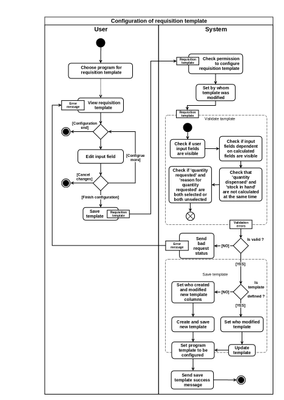Scope
The steps taken to configure options in configuring the Requisition Template, which informs the columns and properties for the requisition form. The requisition form is what end users (storeroom mangers) view to input stock information to inform the reordering of stockand edit in requesting additional stock. We call this the Requisition and Report (R&R) since information is both requested and gathered from the end user. The requisition template is configured by program. The feature allows features allow implementers to configure templates to meet the unique programmatic needs.
Implementers are able to:
- Select from a robust list of columns to be included in the requisition form. For example, Beginning Balance, Received Quantity, Stock on Hand, Calculated order Quantity, Adjusted Consumption, and more.
- Define column header names/labels. For example, chaging "Beginning Balance" to display as "Beg. Balance" or another term that resonates with end users.
- Define column header definitions to provide definitions to end users.
- Designate the order in which columns are displayed. This is done by dragging and dropping the row in the desired order.
- Select end user input options. For example, either calculated or user input.
- Determine if end users are allowed to skip products or not.
- Add in unique calculations and columns leveraging the extensions mechanisms defined by the Technical Committee. An example of how to do this is described in the Requisition Splitting - Extension Scenario Analysis.
Background
Each implementation of OpenLMIS configures their requisition templates according to the programmatic needs. There is one requisition template per program. Using the new architecture, implementers can extend the template to meet specific needs for new formulas and options. For example, one example desired extension would be to display values as packs versus dispensing units. Take care configuring the template as many columns are dependent on either user input or reference data.
...
Column Dependencies
| Gliffy | ||||
|---|---|---|---|---|
|
Process Flow
Work in progress.
2.0 activity diagram between User and System
Stories
Beta Release
| Jira Legacy | ||||||||||
|---|---|---|---|---|---|---|---|---|---|---|
|
...
| Jira Legacy | ||||||||||
|---|---|---|---|---|---|---|---|---|---|---|
|
Process Flow
Need to still create the activity diagram depicting the user's experience in configuring the system.
2.0 activity diagram between User and System
Dependencies
| Gliffy | ||
|---|---|---|
|
Open Questions
Below is a list of questions to be addressed
...
